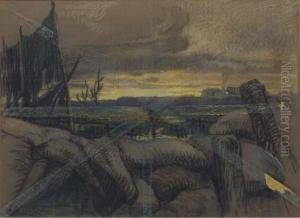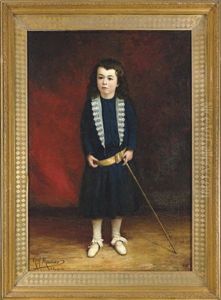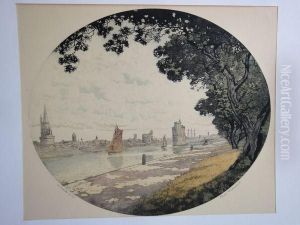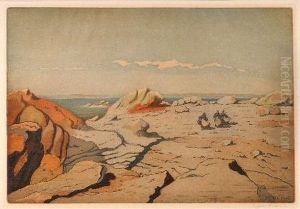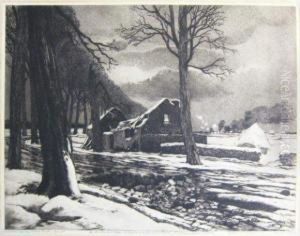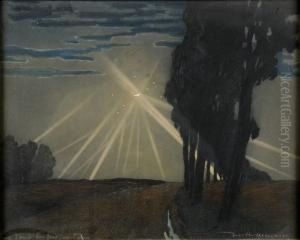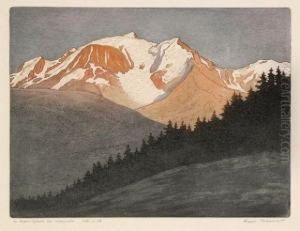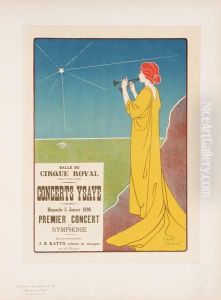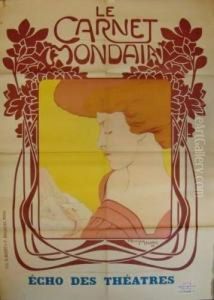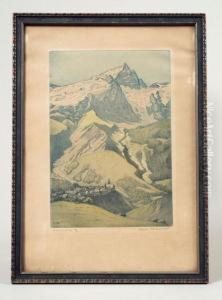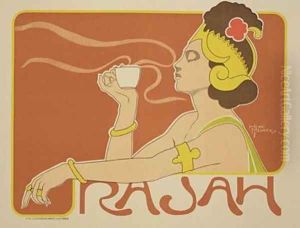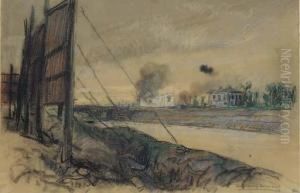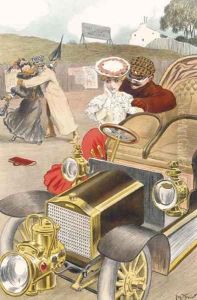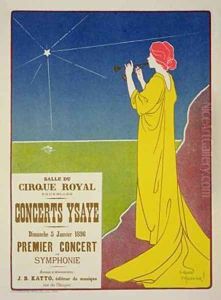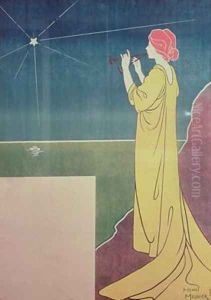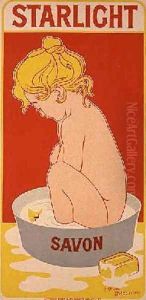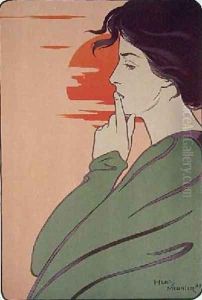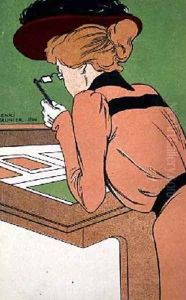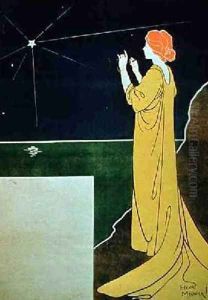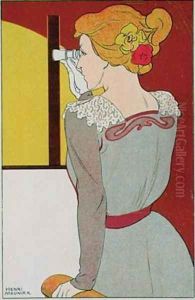Henri Georges Jean Isidore Meunier Paintings
Henri Georges Jean Isidore Meunier, often simply known as Henri Meunier, was a prominent Belgian artist known for his versatile contributions to the Art Nouveau movement. Born on April 25, 1873, in Ixelles, Belgium, Meunier was part of a well-known family of artists; his uncle, Constantin Meunier, was a famed sculptor and painter, which undoubtedly influenced Henri's early exposure to the arts. Meunier's work spanned various mediums, including graphic art, painting, and sculpture, showcasing his multifaceted talent and his ability to adapt his style to different forms of expression.
Meunier's artistic career began in earnest in the late 19th century, a time when the Art Nouveau movement was gaining momentum across Europe. His works are characterized by their elegant lines, stylized forms, and often, thematic focus on women, flowers, and allegorical subjects, embodying the quintessential elements of the movement. He was particularly adept at lithography and poster design, through which he gained considerable recognition. Meunier's posters and illustrations often featured bold colors, intricate patterns, and a distinctive stylization of figures, making them some of the most iconic images of the Art Nouveau era.
In addition to his graphic work, Meunier also explored book illustration, contributing to the visual culture of the time with his unique interpretations of literary works. His illustrations for books and magazines further cemented his reputation as a key figure in the Art Nouveau movement, demonstrating his skill in marrying text and image in a harmonious and aesthetically pleasing manner.
Throughout his career, Henri Meunier also engaged in sculpture, where his works displayed a similar sensitivity to form and detail that characterized his graphic designs. Though perhaps less known than his graphic art, his sculptures contribute to the breadth of his artistic legacy, showcasing his ability to work across multiple mediums with equal proficiency.
Henri Meunier's influence extended beyond his immediate contributions to the arts; he was part of a broader movement that sought to break down the barriers between fine arts and applied arts, advocating for a holistic approach to artistic creation that influenced generations of artists to come. He participated in numerous exhibitions throughout Europe, helping to spread the Art Nouveau aesthetic and philosophy.
Henri Meunier's life came to an untimely end when he passed away on January 8, 1922, in Etterbeek, Belgium. Despite his relatively short life, his work left a lasting impact on the world of art, ensuring his place among the notable figures of the Art Nouveau movement. Today, his works are celebrated in museums and collections around the world, testament to his enduring legacy as a key contributor to the art and culture of his time.
